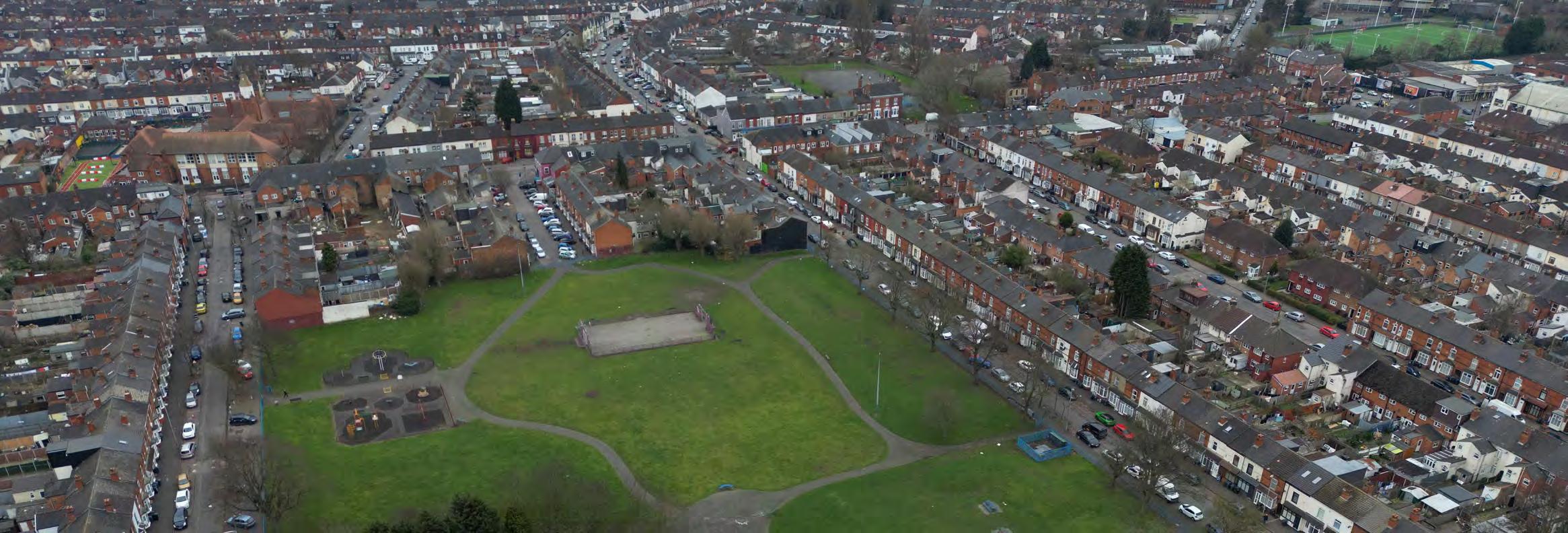
6 minute read
Face the Sun Care-full Communities
from Design Portfolio
by samuelhearne
Expanding on my previous project, "[Re] Making a Community," and moving to a different site, the focus of this architectural thesis is to further develop the transitional space design that encourages freedom of movement and inclusive access to public green spaces. This expansion is in line with the studio's theme of Care-full Communities.
The project aims to address the prevalent issue of domestic abuse in Bordesley Green and beyond. Shocking statistics reveal that 1 in 3 women (736 million) have experienced physical or sexual violence at some point in their lifetime, while 1 in 4 young women (aged 15-24 years) have already been subjected to violence by an intimate partner worldwide. The West Midlands has the second-highest rate of sexual and violent offenses in the UK, with 125.3 cases per 1,000. Between January 2022 and January 2023, there were a staggering 1,908 reported cases of violence and sexual offenses in Bordesley Green alone, which represents over 50% of all reported crimes in the area. Sadly, over 80% of these crimes go unresolved, which highlights the urgent need for the community to receive support in combating this issue.
Advertisement
The project aims to tackle domestic abuse by identifying a location in Bordesley Green that connects with a recreational ground. Additionally, it involves an examination of the public commons and green spaces infrastructure. Although numerous sites were considered, some did not meet my goal of having a direct impact, interaction, and connection with green spaces. Attracted by the pub and the potential for renovating a previously burned-down social club, Grange Road Recreation Ground appeared to be an excellent opportunity.
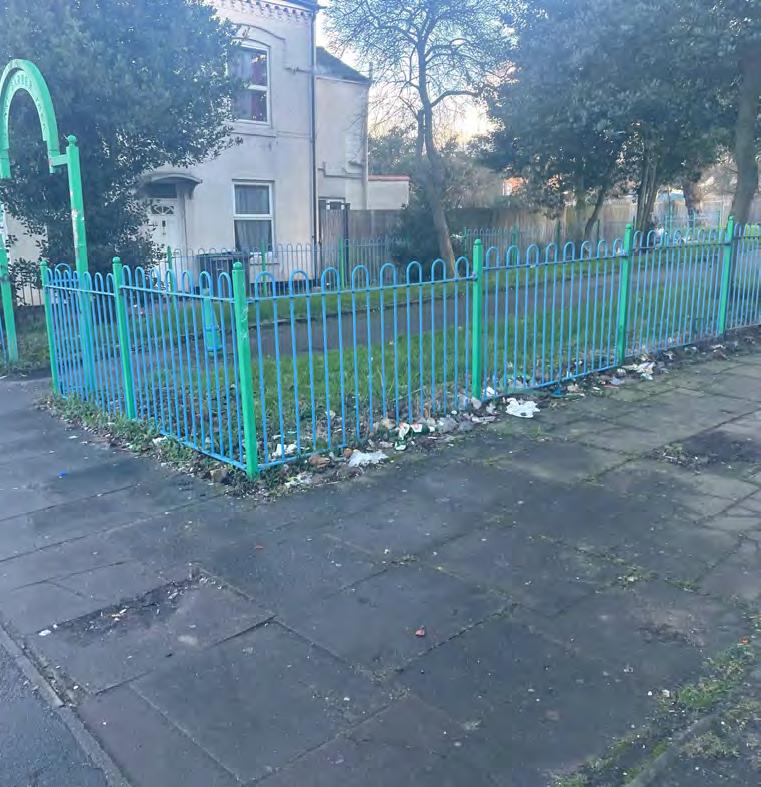
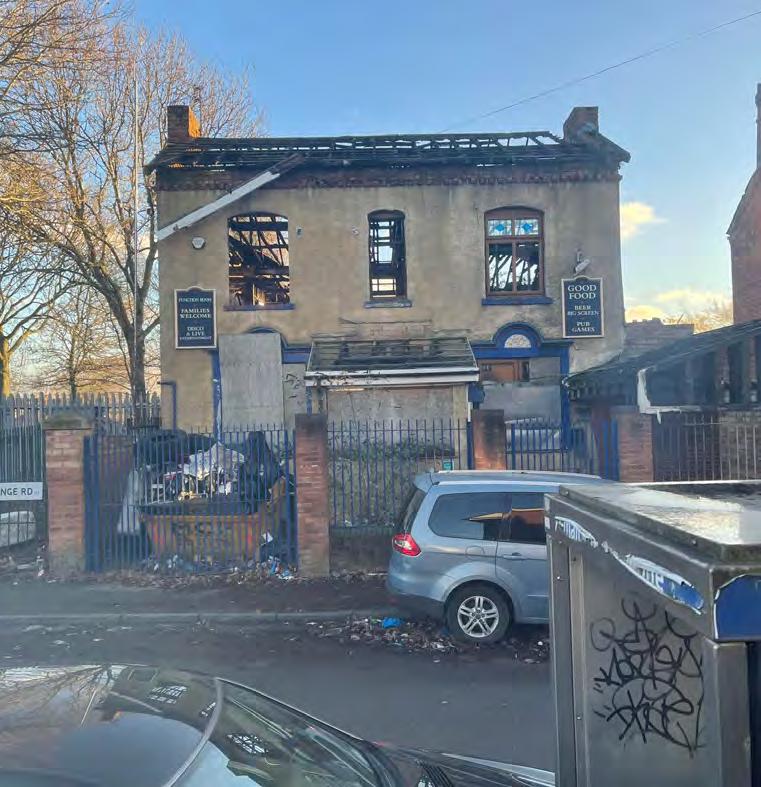
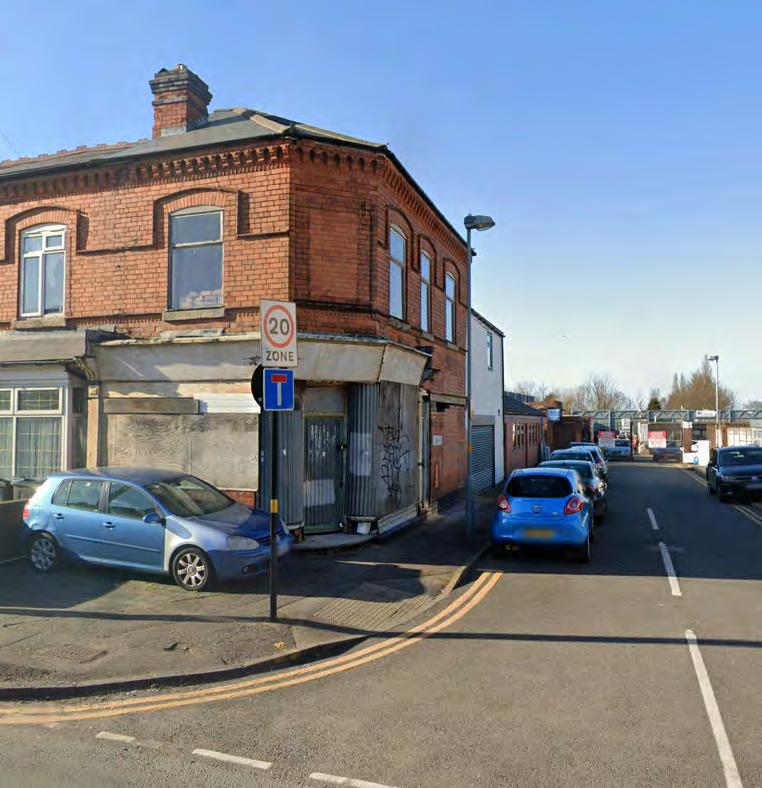
In the heart of Bordesley Green, emerged a powerful symbol of unity and hope. Women formed a circle to form a sanctuary. While surrounded by spikes representing reported violence and domestic abuse affecting one in three women, their resilience shone through. It sparks a community-wide movement, inspiring conversations and fostering safe spaces for healing. It stood as a beacon, reminding all that change was possible, and together, they could overcome the darkness.
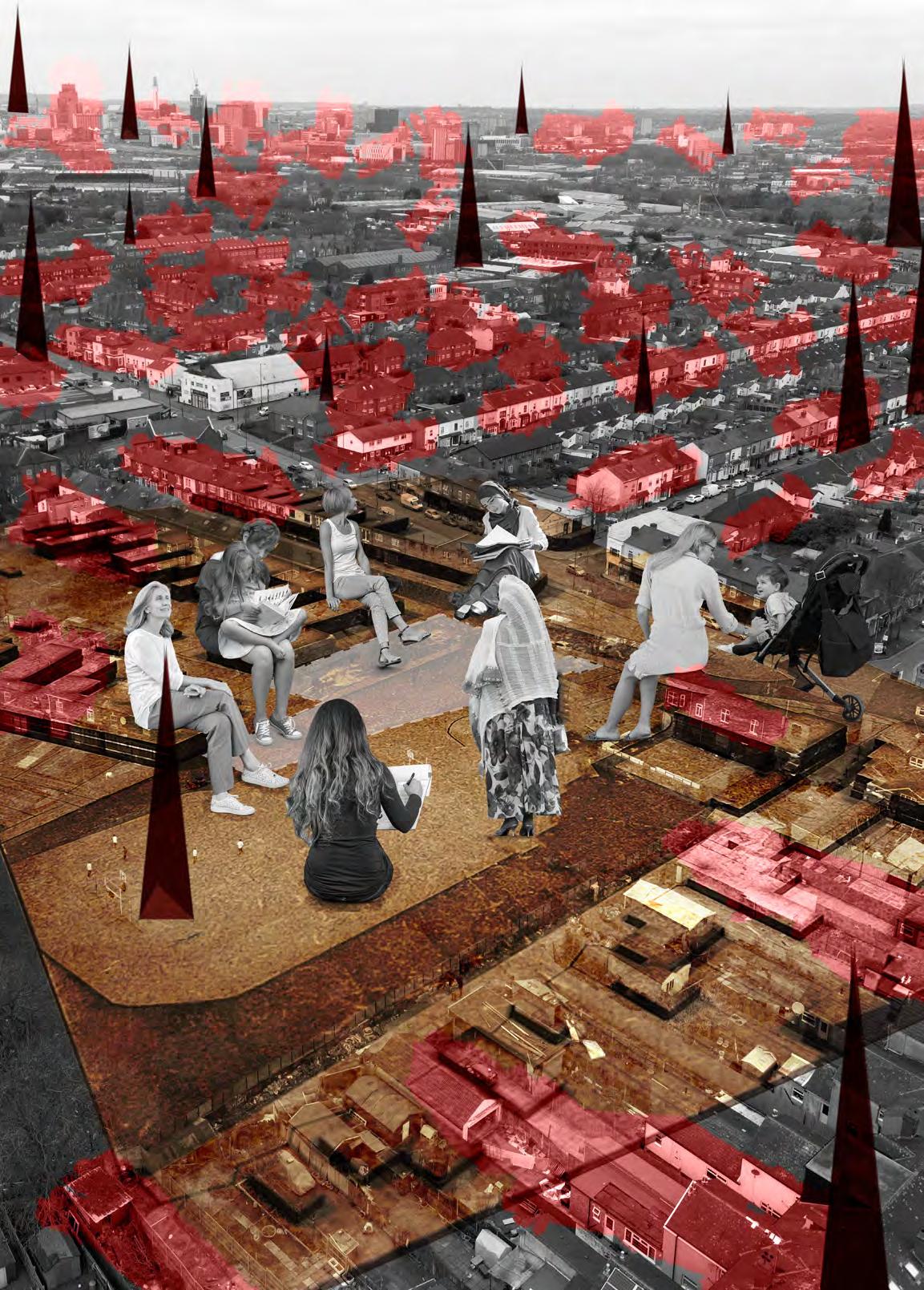
24681012141618
Scale1:1250
0 102030405060708090
The project seeks to address domestic abuse by identifying a site in Bordesley Green that interacts with a recreational ground, while also exploring the public commons and green spaces infrastructure. The chosen site, labeled as a Revision Point by the Ordinance Survey in the 1950s, is a social club as early as the 1930’s and has significant community and historical importance.
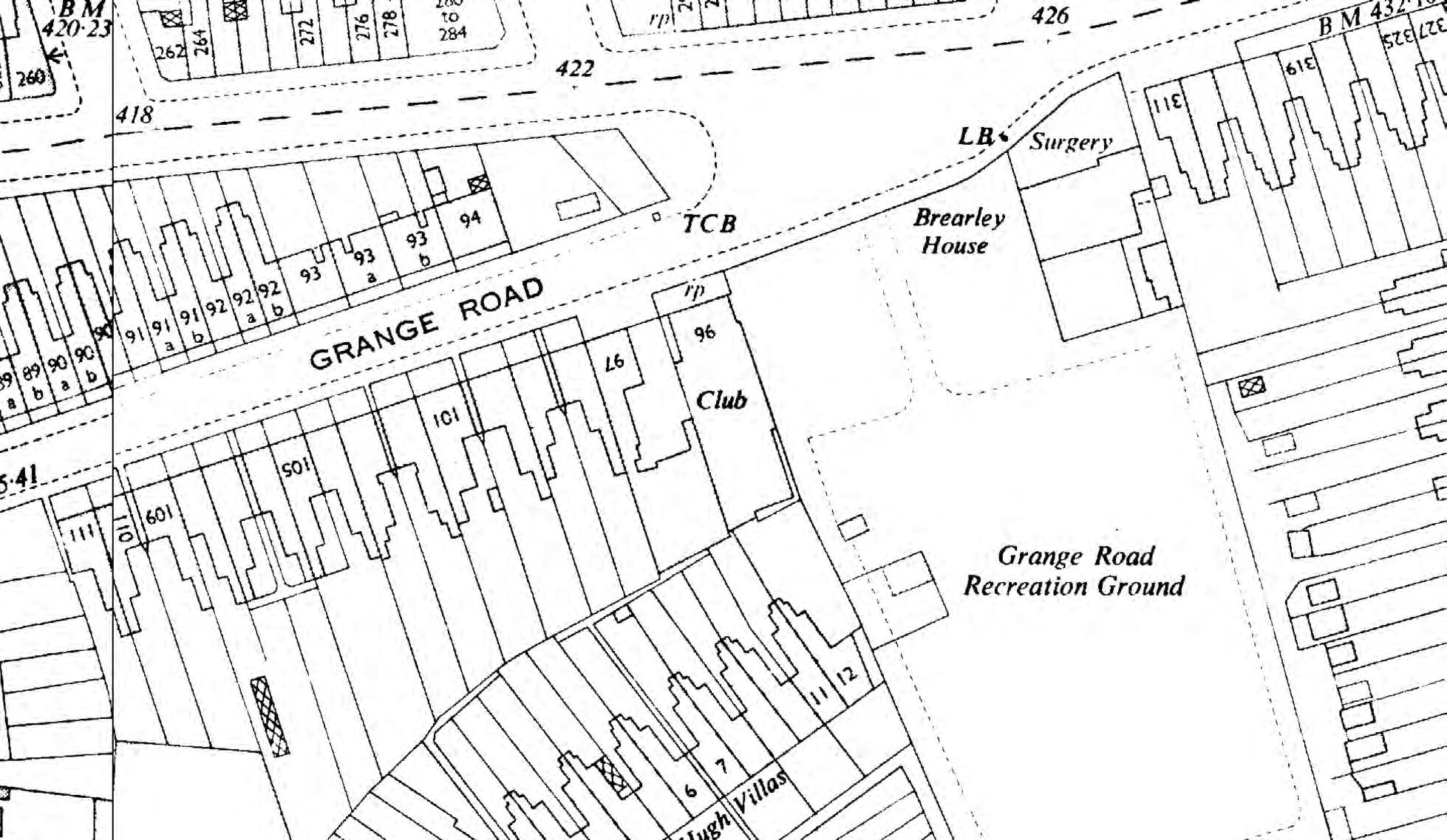
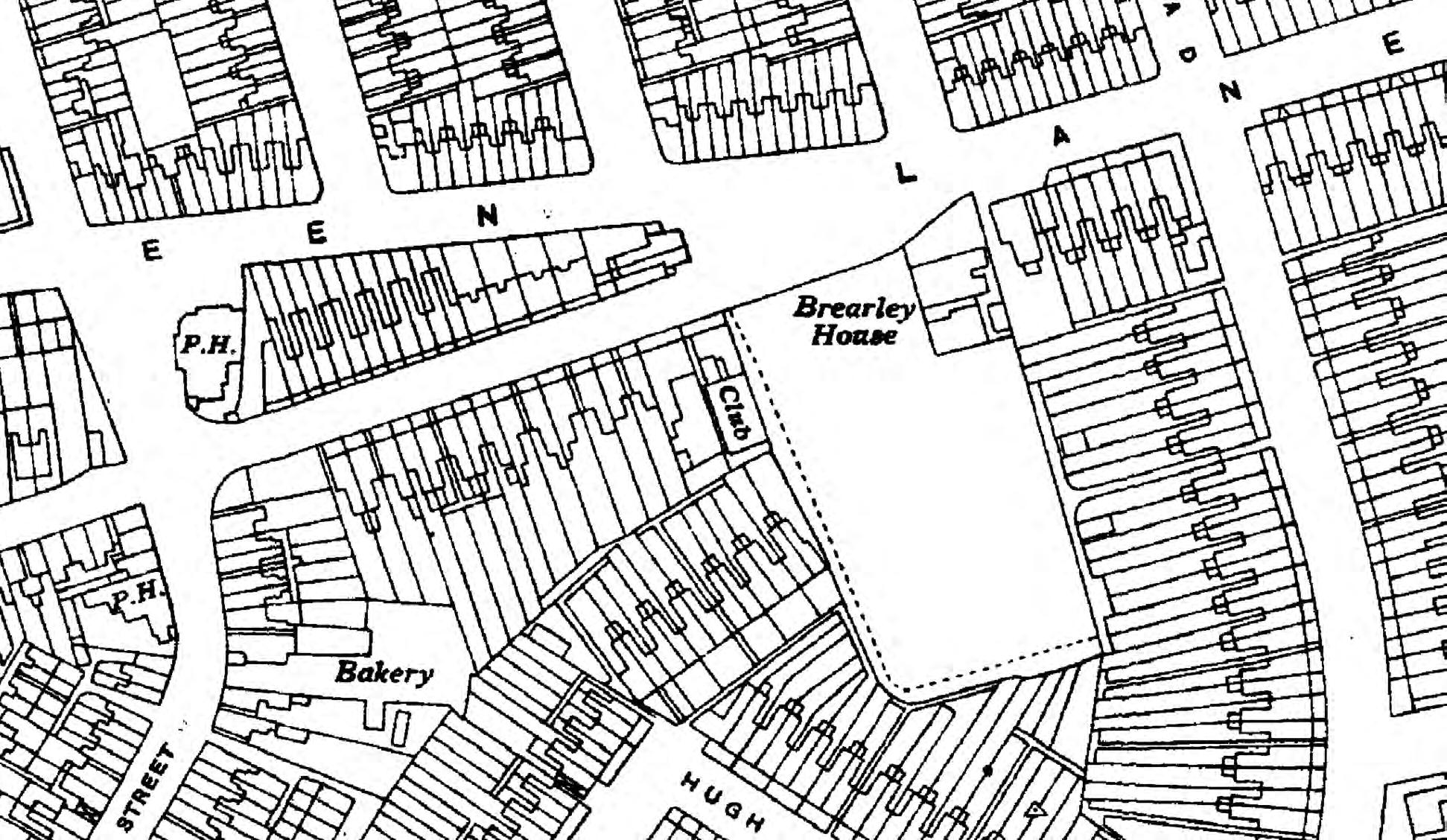
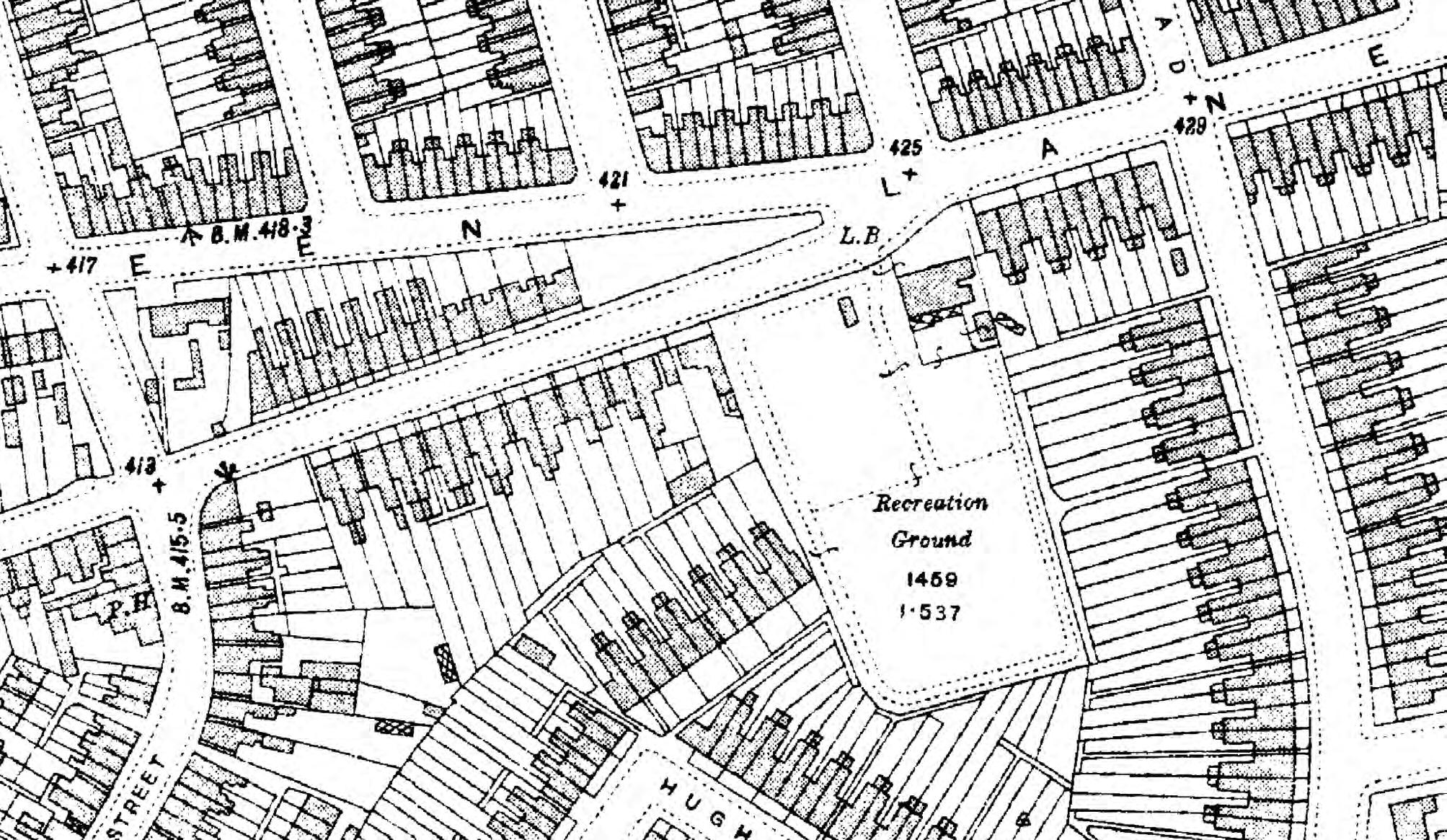
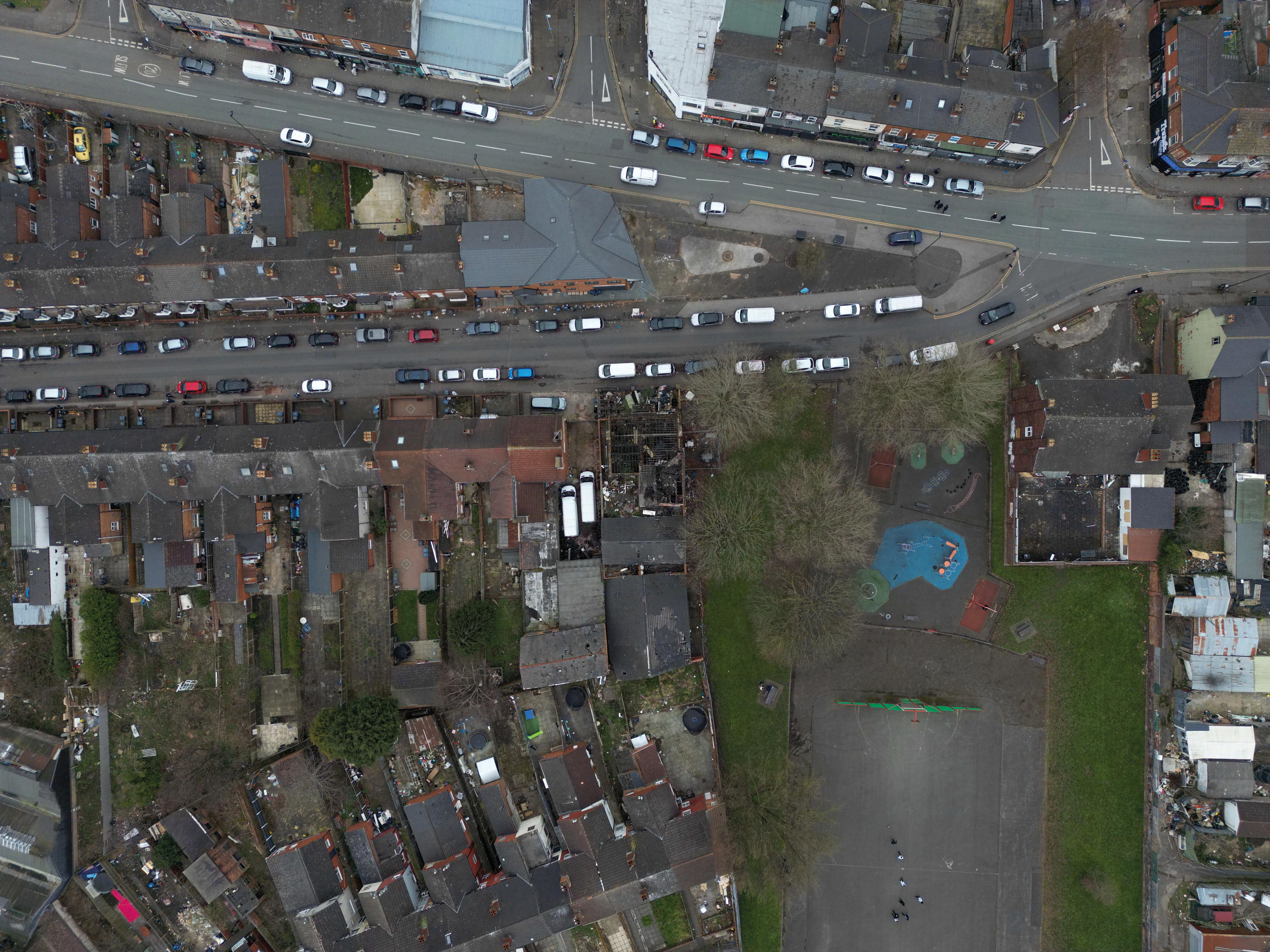
0 102030405060708090
0 102030405060708090 100m the 15 minute city model, made the decision that the site was suitable for residential use. At this stage, proposed repurposing the building as a point of contact centre for survivors who had left their intimate partners. took a visit to the Yorkshire Maggie Centre, designed by Heatherwick Studios, to speak with a NHS cancer support specialist about the building and services hosted within. We discussed how the design features and strategies used in the Centre create a safe and supportive environment that encourages healing and helps individuals rebuild their lives in mind. The use of greenery to soften the transition into the building is a key strategy to encourage visitors to engage with the natural surroundings. The integration of other natural elements in a thoughtful and intentional way also creates a space that promotes a sense of safety, relaxation, and well-being. Within the building, design elements such as natural lighting, carefully chosen materials, and a timeless quality contribute to a sense of calm and tranquility. The Leeds Maggie Centre is a testament to the power of architecture to create spaces that not only serve a practical purpose but also foster a sense of connection and belonging.
The project repurposes the now burnt-down social club, aligning with the sustainable development goal of repurposing existing buildings. The proposal aims to address social injustices like domestic abuse and create a positive impact on the community in Bordesley Green and beyond. This approach is inspired by the projected permanent closure of three in ten UK pubs in 2023.

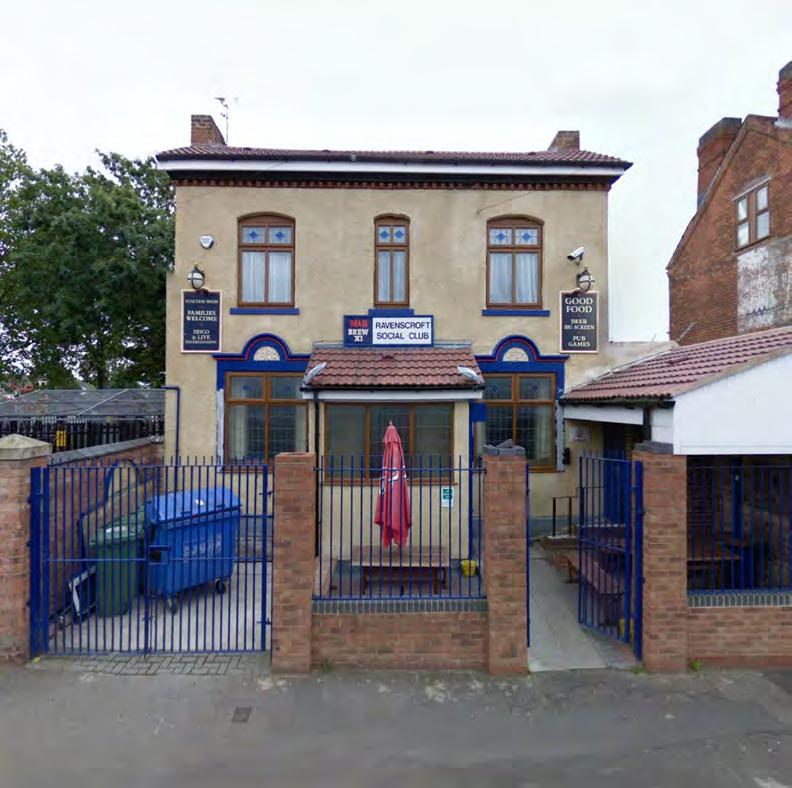
The social club’s past includes three fires, suspected arson, accidental and an attempt to destroy evidence of an illegal cannabis factory. Nonetheless, the goal of repurposing the social club and creating positive change remains.
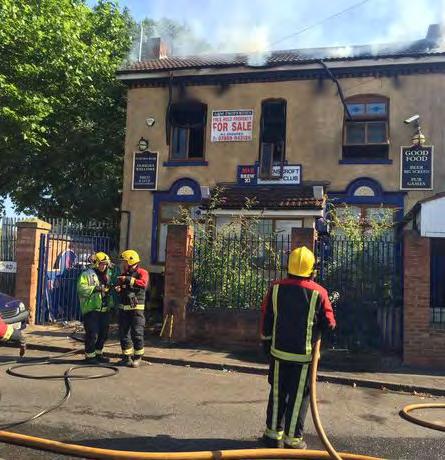


During this project stage, collaborated with Domestic Abuse Support UK, a Facebook group with over 3000 members of survivors and their supporters. Together with the group’s founder, who had experienced an abusive relationship eleven years ago, we decided to transform the building’s function from a contact centre to a sanctuary for survivors of domestic abuse, expanding the support group from an online service to an in-person one. The goal is to create a safe and supportive environment that encourages healing and helps individuals rebuild their lives. The project will provide access to essential resources and support services such as counselling, therapy, legal assistance, job training, and childcare, with flexible spaces designed for relaxation, creativity, and gentle physical activity.
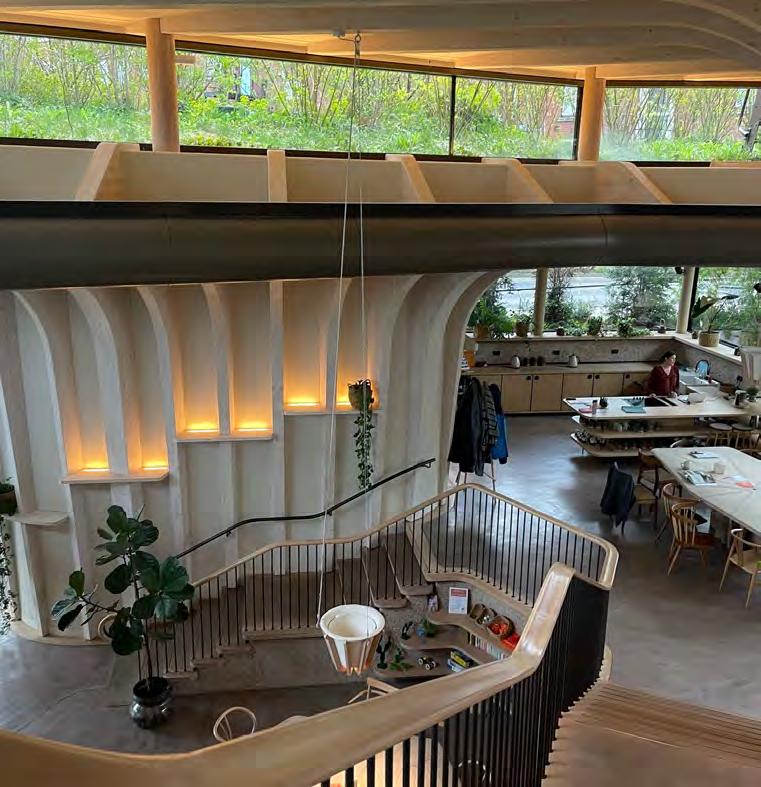
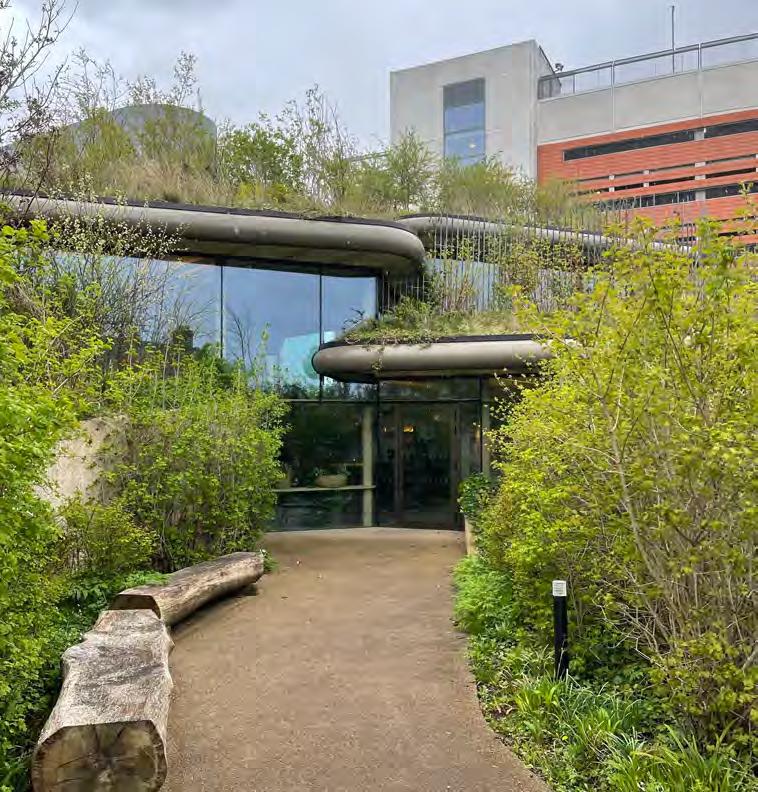
After my visit to the Maggie Centre, I realised that the site boundary could be expanded to create a better integration with the surrounding recreational ground. This would not only provide more space but also make the centre more accessible to the community. Furthermore, staff members at the Maggie Centre had suggested the addition of new rooms, such as those needed by Domestic Abuse Support UK. My proposals aimed to incorporate these new rooms while also taking into account the existing trees on site. By working around the tree located in the center of the site, the design aimed to preserve the natural elements while creating a cohesive and functional space. This approach ensured that the design of the centre remained sensitive to the needs of the community and the surrounding environment.
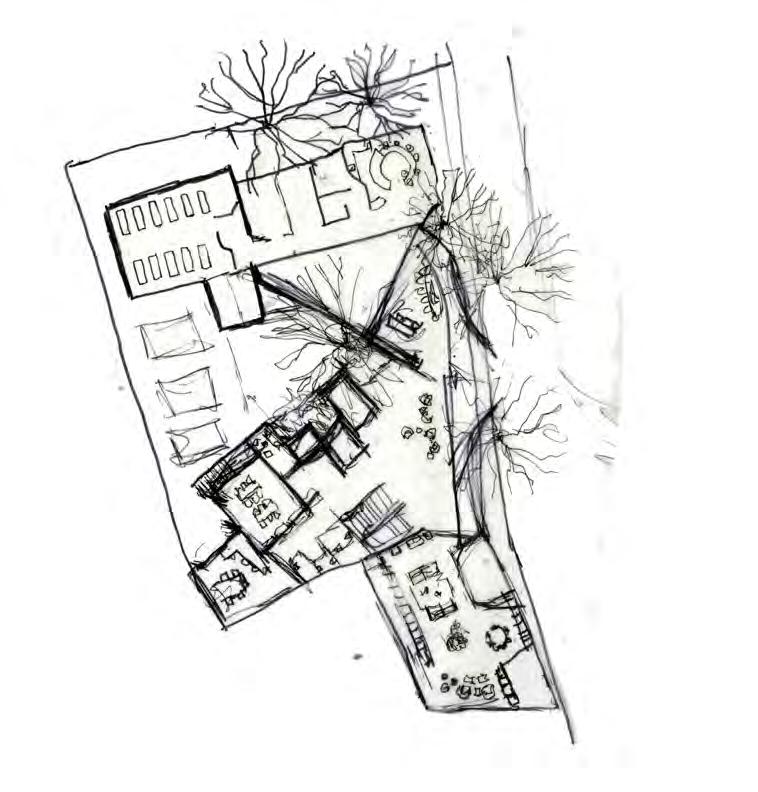
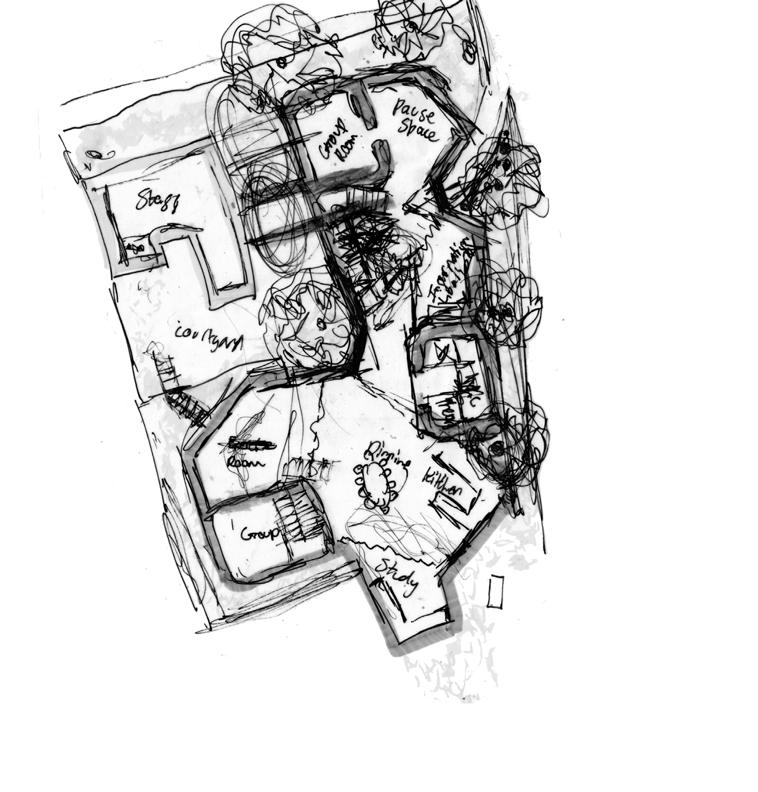
A key constraint of the project was to shield those using the facilities while still having a street frontage. To address this challenge, I decided to locate the gentle exercise space, along with changing facilities and a café, at the north of the site, making it easily accessible to the public from street level. This public exercise space and café would generate income to support the sanctuary while also acting as a shield to what lies south of the first building. By placing the entrance to the sanctuary at the south of the site, I aimed to create a shielded journey for those seeking support. Once inside the building, the user’s view should be unobstructed, providing a sense of openness and transparency.
“As you come in you can look up and you can basically see all the destinations that you might want to go to so there’s nothing hidden in anyway… when you go into a building as if its possible that you grasp the geography of the building straight away and then people’s anxiety level drops down.”
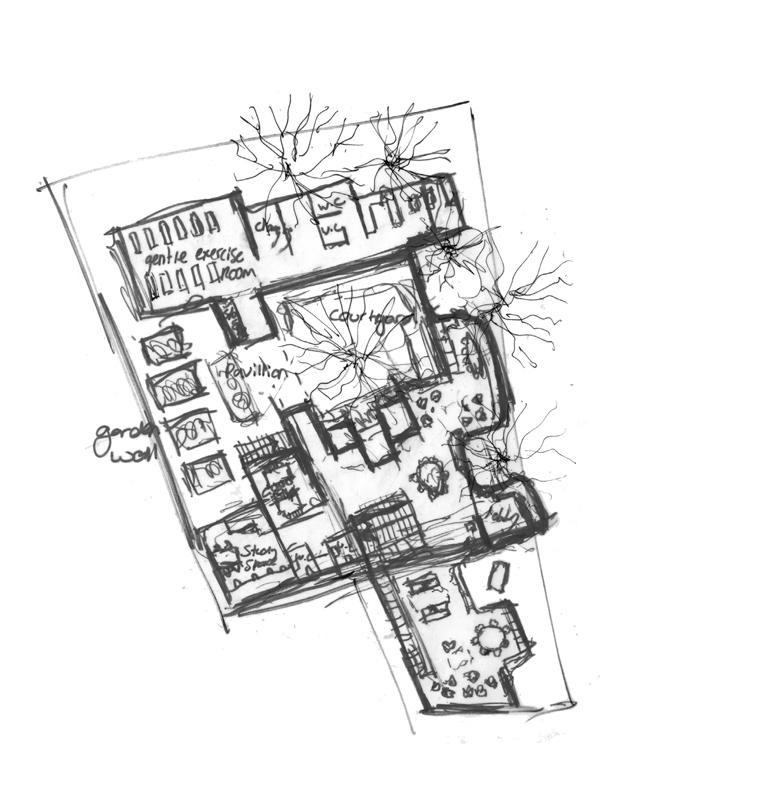
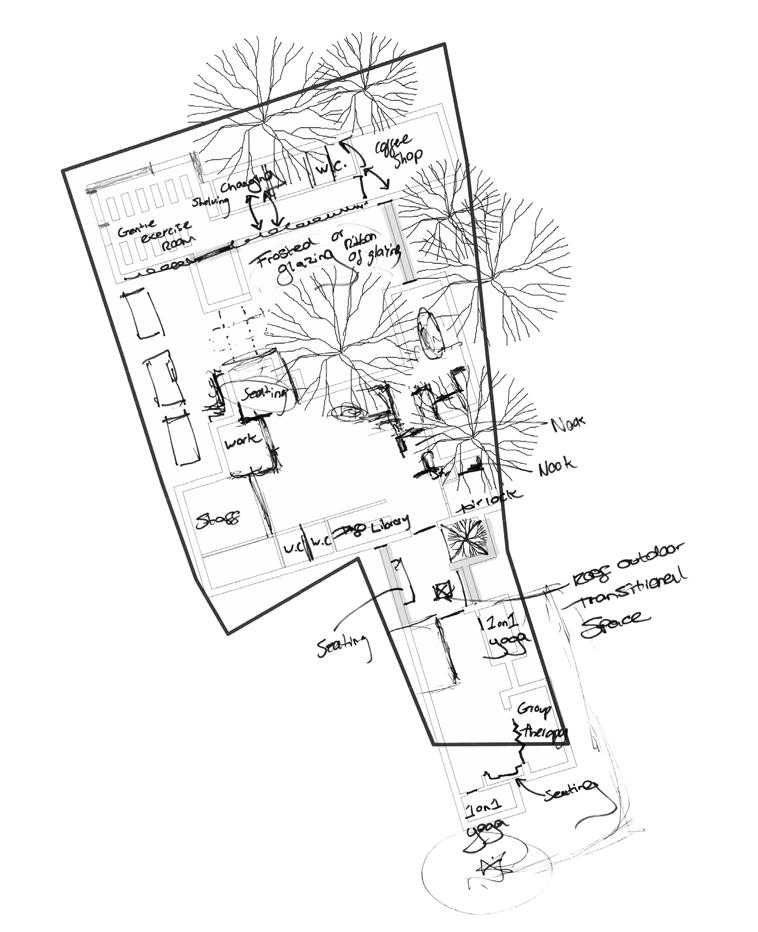
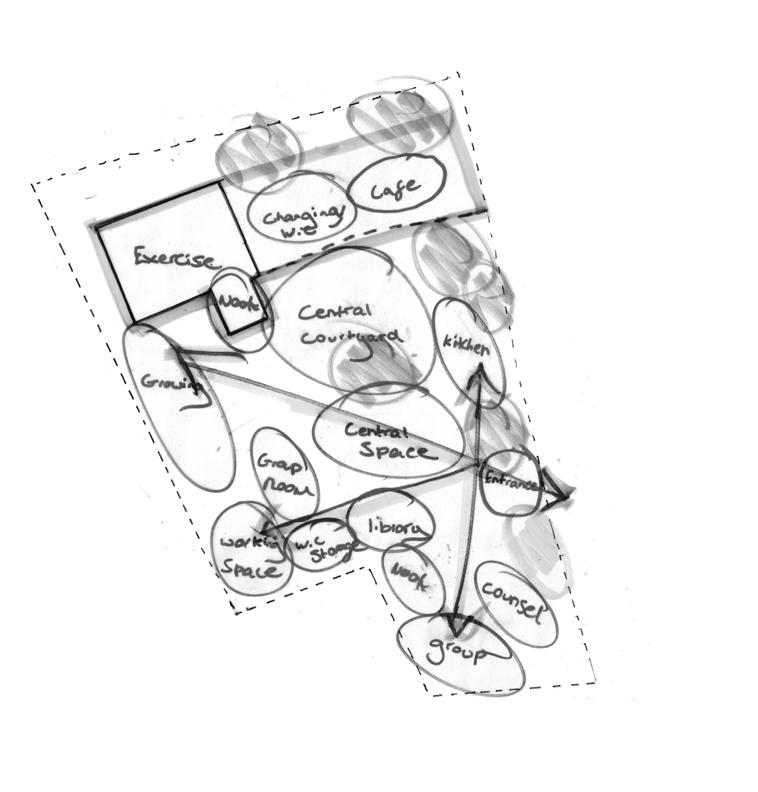
Richard Murphy Managing Director, Richard Murphy Architects
After carefully listening to the client’s account and conducting thorough research, including watching various documentaries on intimate partner domestic abuse, I generated two word clouds. The first word cloud comprised all the negative words used by the interviewees, specifically pertaining to domestic violence. The second word cloud, on the other hand, consisted of antonyms for those previously mentioned negative words, offering a contrasting perspective.
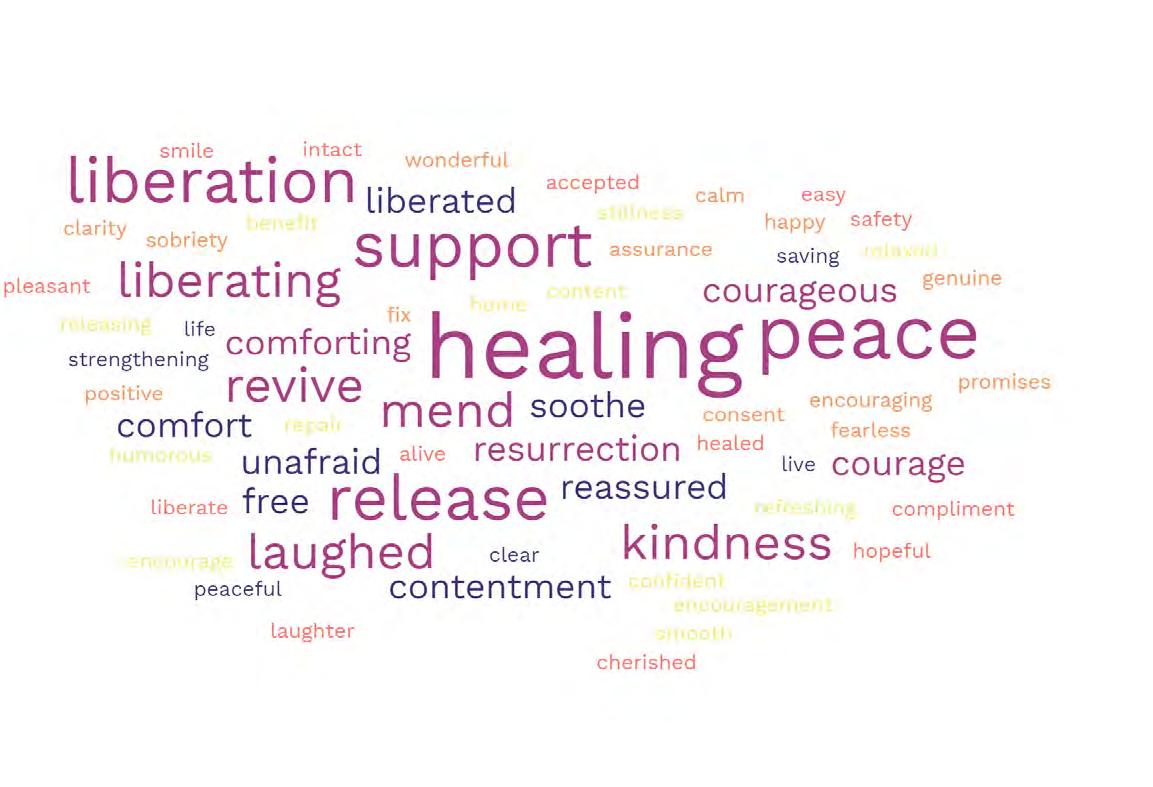
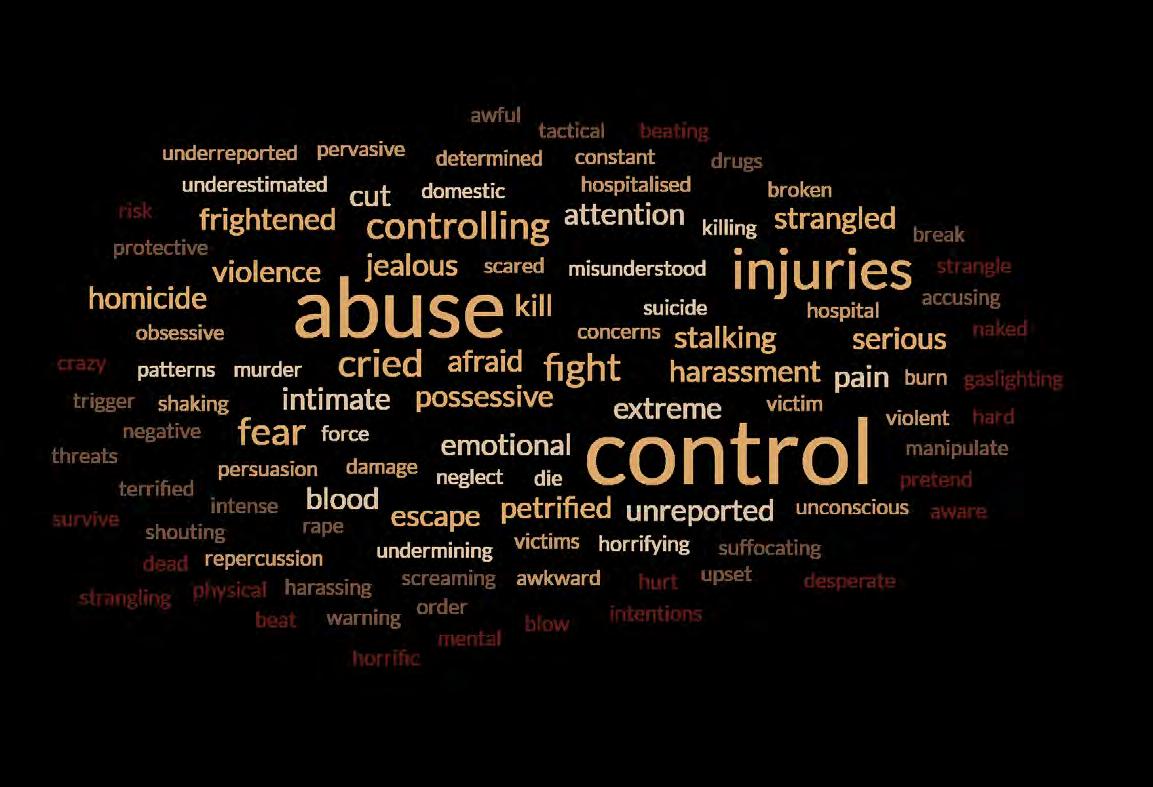
To expedite the design process and present various design concepts to Domestic Abuse Support UK, I employed the use of Artificial Intelligence (AI) to generate visual representations of the different spaces within the building. I gathered quotes from women who had survived domestic abuse, and AI used the antonyms of these quotes as prompts to generate designs that were suited to the brief and room requirements requested by Domestic Abuse Support UK. This allowed for a more efficient and streamlined design process, where different options could be presented quickly and modified according to feedback.
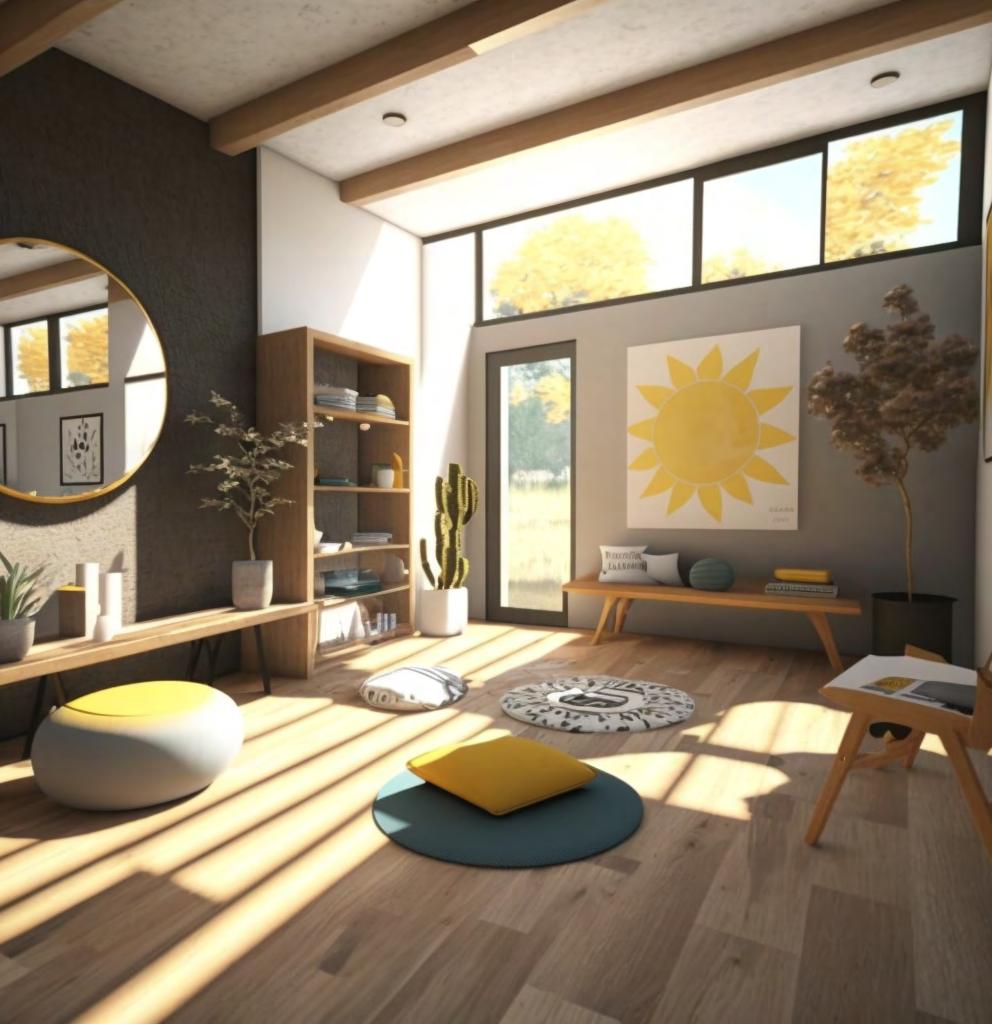
Precedents Refuge Site Expansion Sanctuary
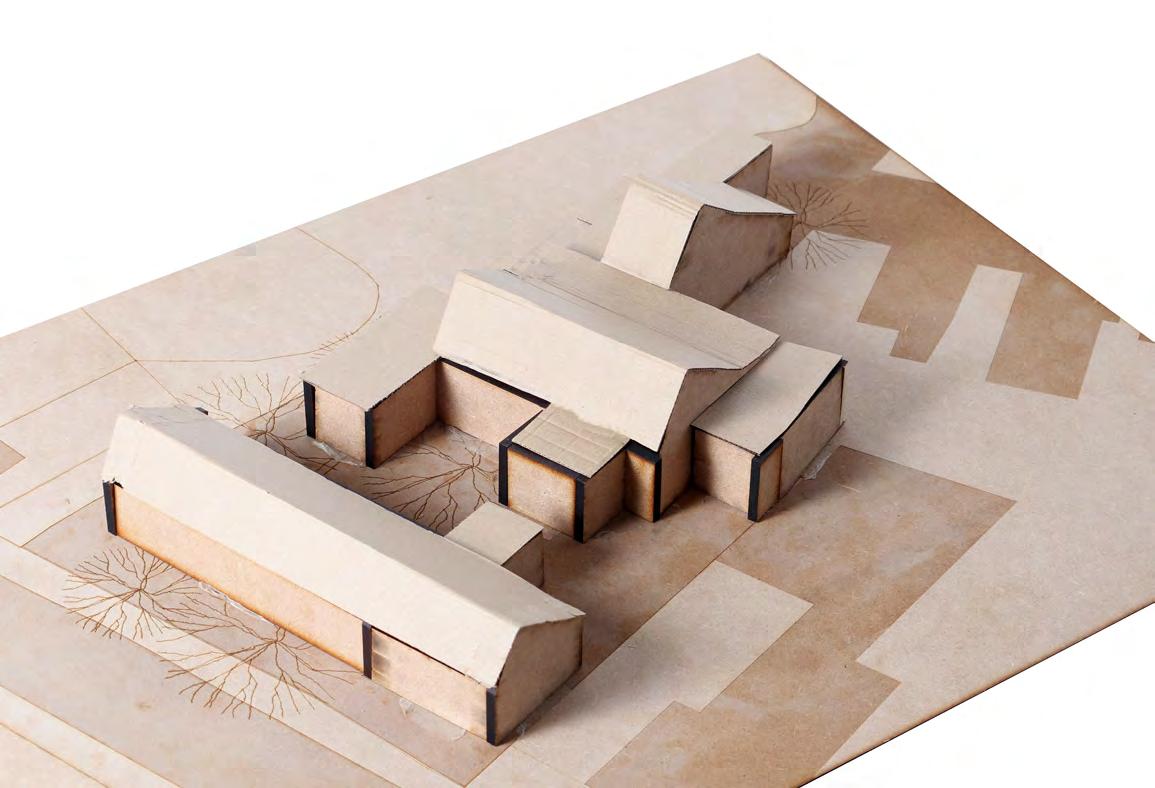
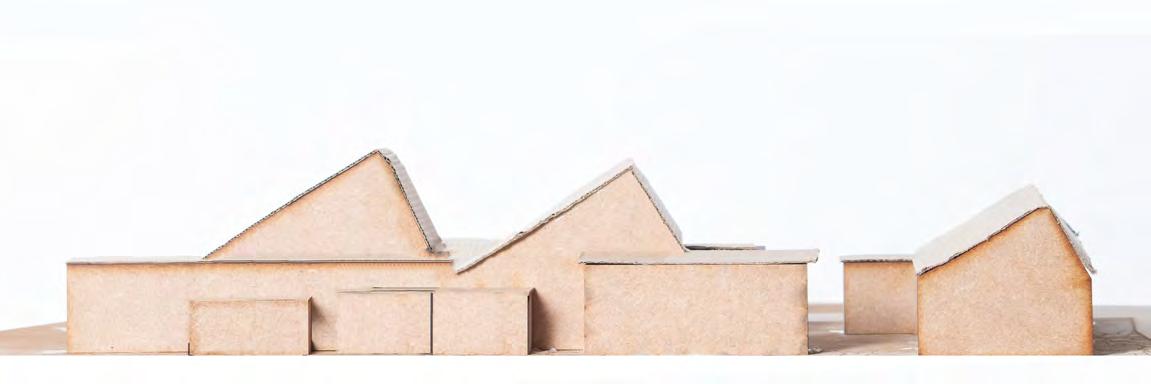
The project’s ultimate objective is to establish a place for survivors of domestic abuse that meets their immediate needs and helps them attain long-term independence, stability, and success. To achieve this, the project explores the public commons and green spaces infrastructure in Bordesley Green to identify a site that interacts with a recreational ground. In doing so and repairing the common ground, the design contributes to United Nations Sustainable Development Goal 11, specifically target 11.7, by providing safe, inclusive, and accessible green and public spaces by 2030, with a focus on vulnerable groups.
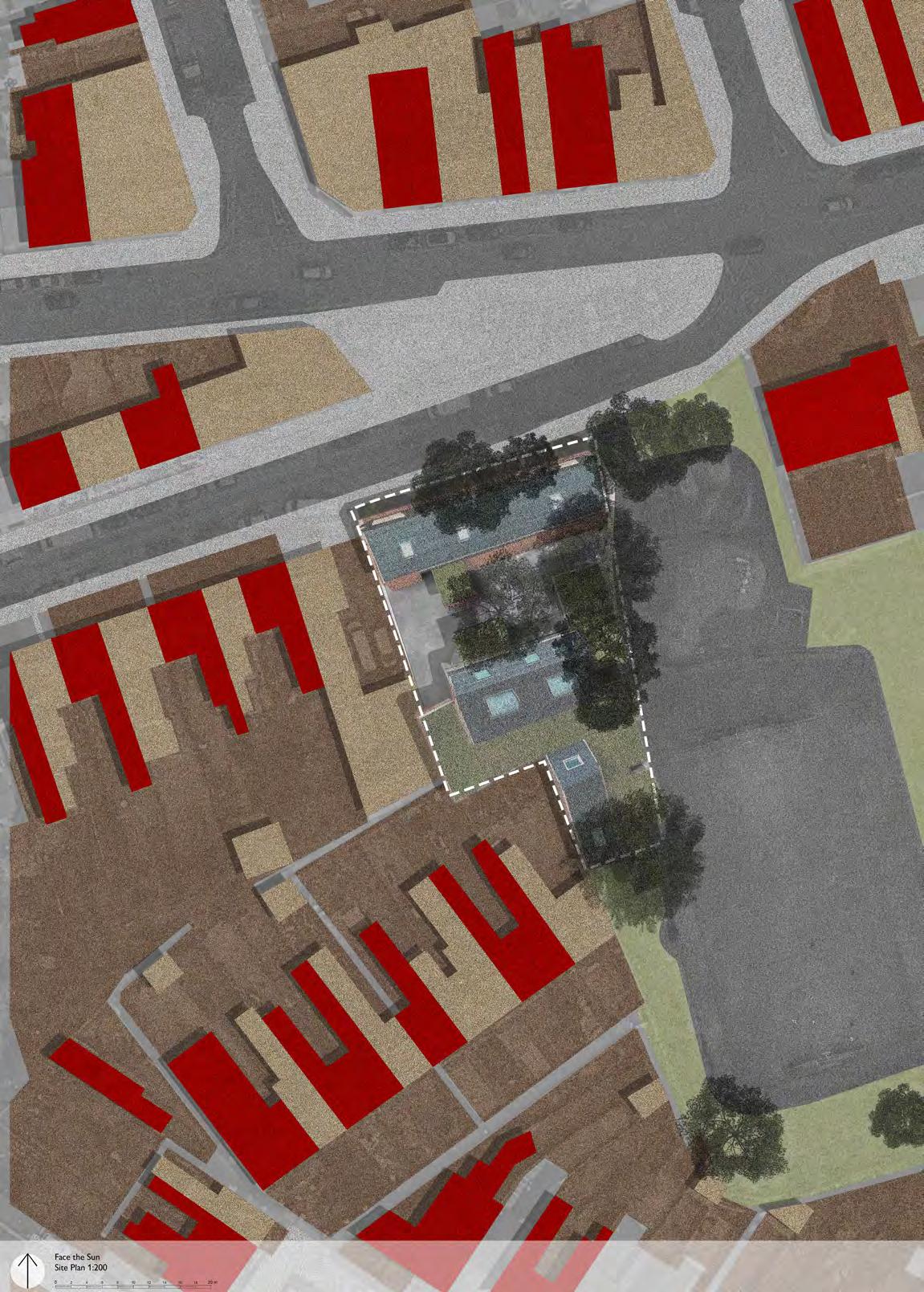
The building’s layout is intentionally designed to be unobstructed, creating a sense of openness and transparency that helps reduce anxiety. Additionally, it offers flexibility to provide adaptable spaces that promote relaxation, creativity, and gentle physical activity.
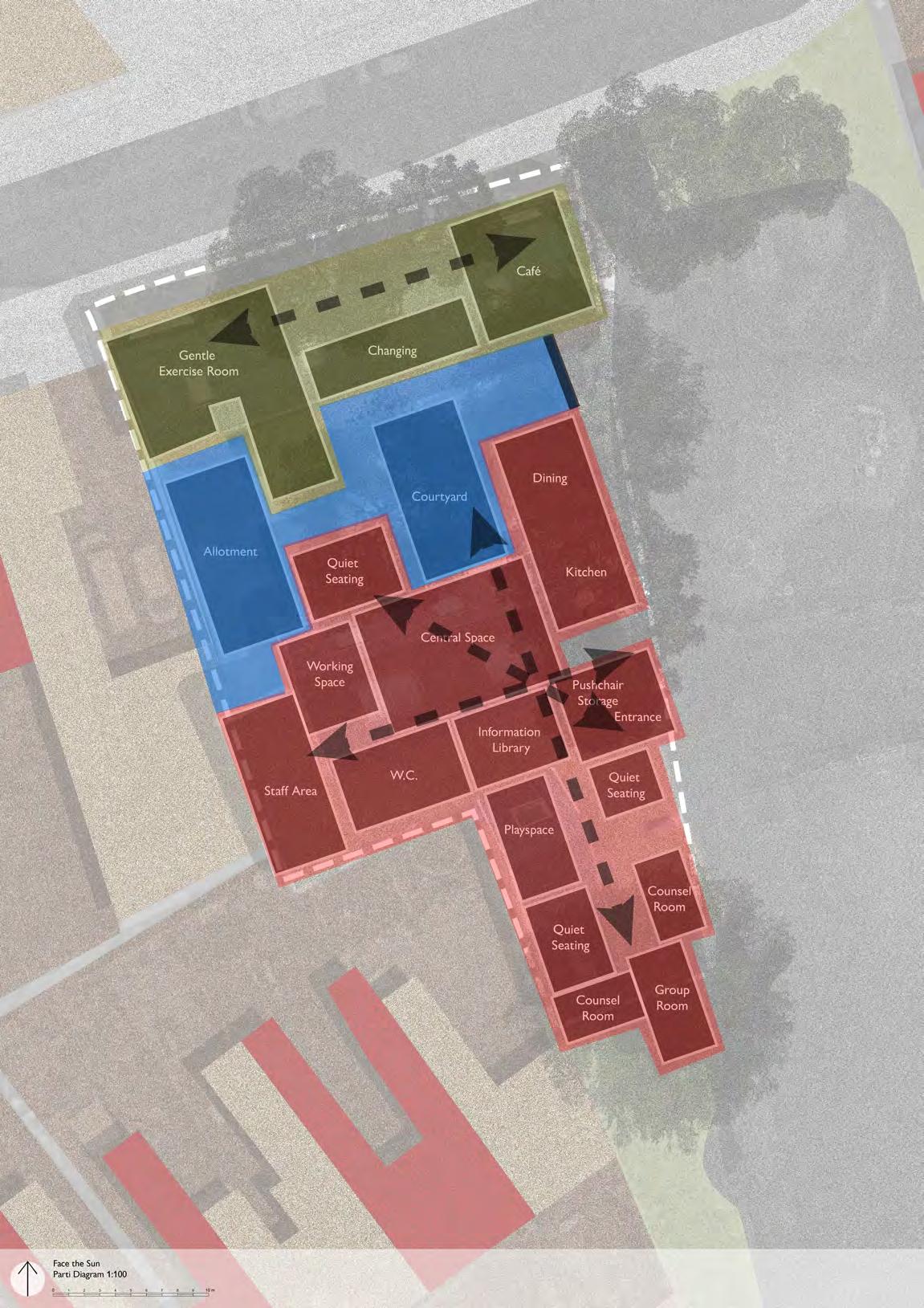
Face the Sun provides a safe and supportive environment that promotes healing and helps women rebuild their lives. The sanctuary meets the needs of the community by providing women with access to essential resources and support services, such as counselling, therapy, legal assistance, job training, and childcare.
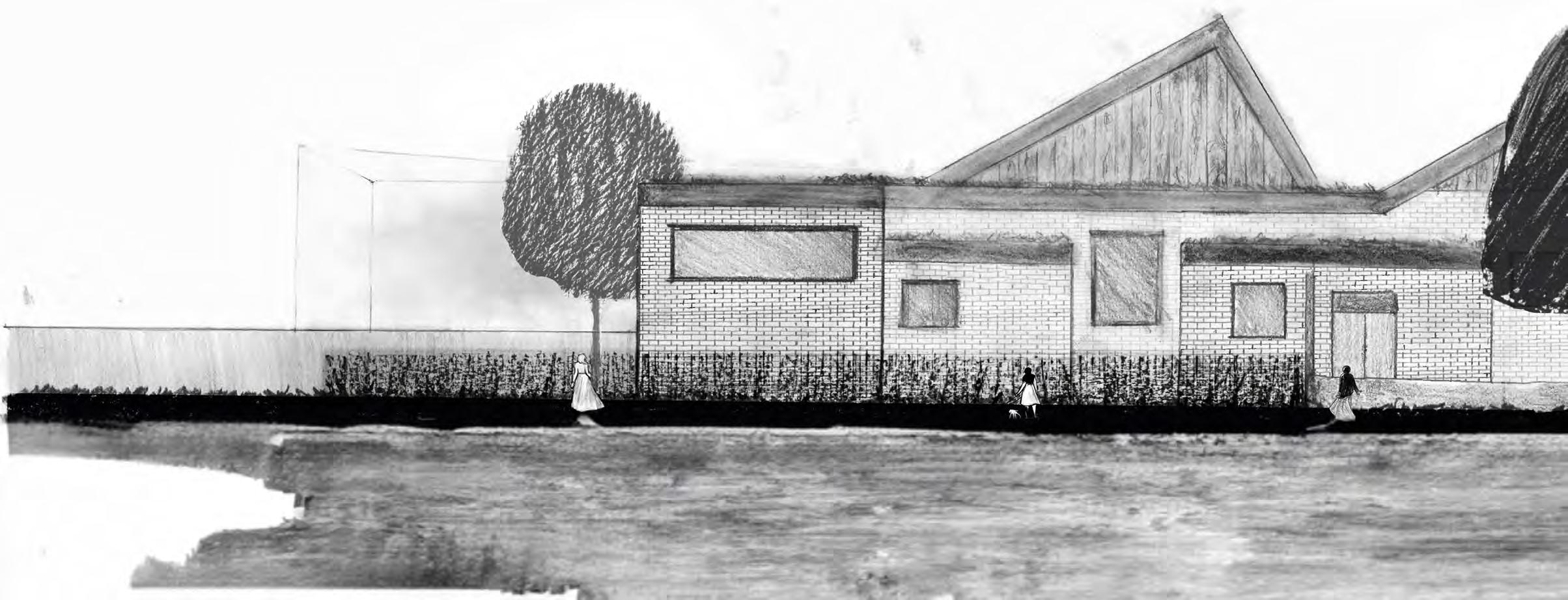
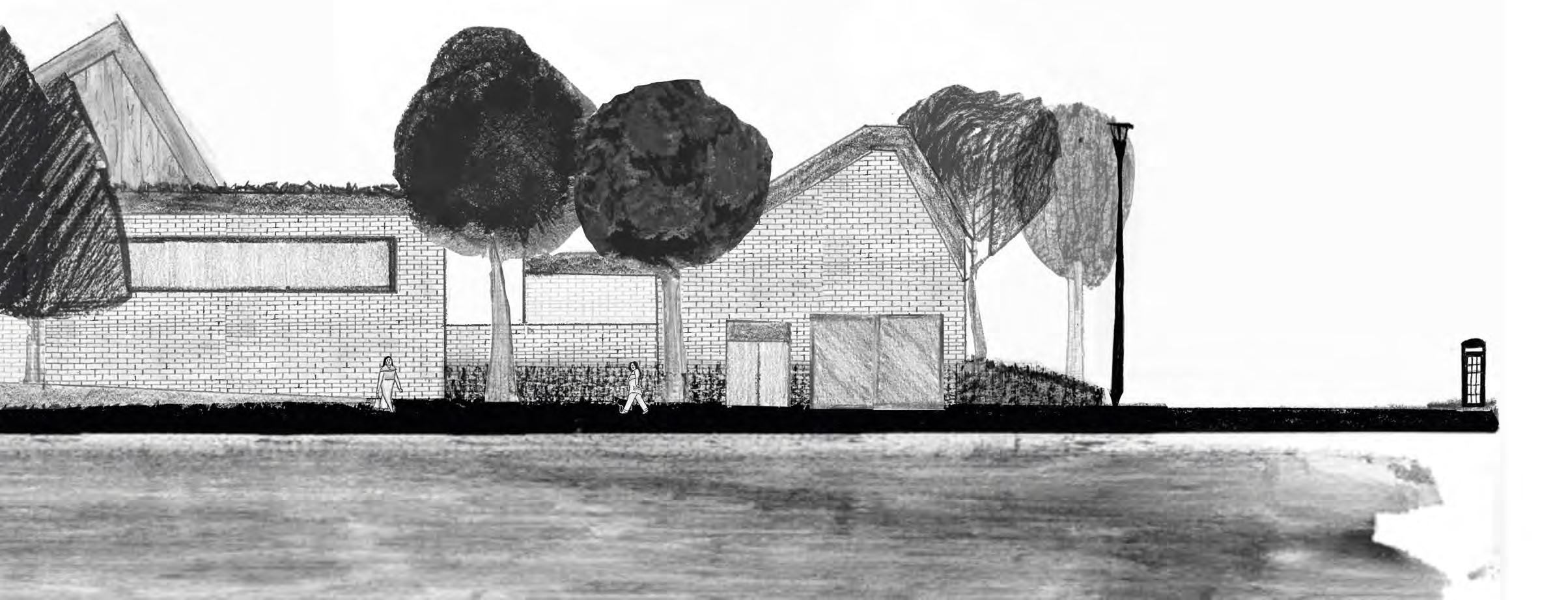
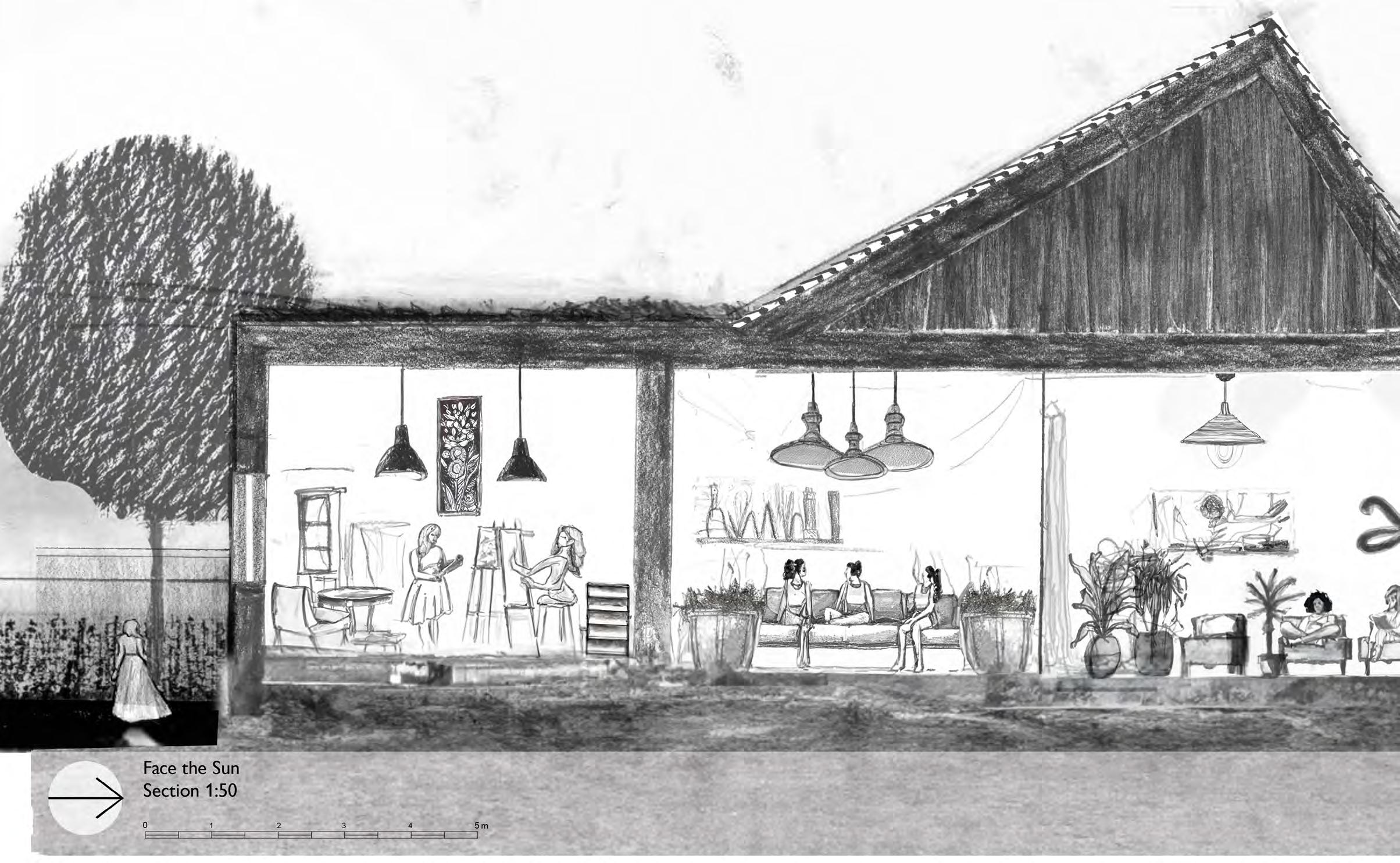
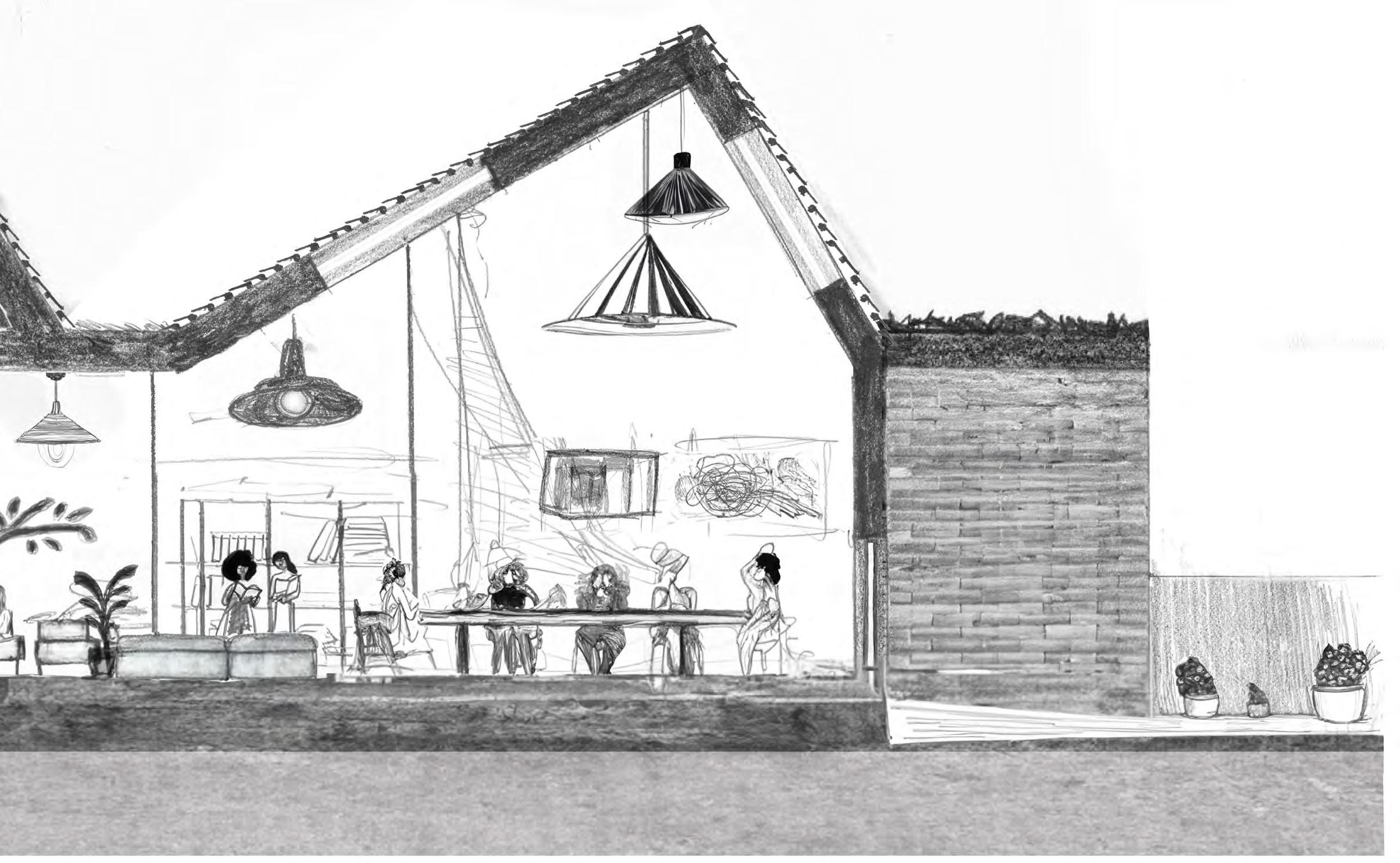
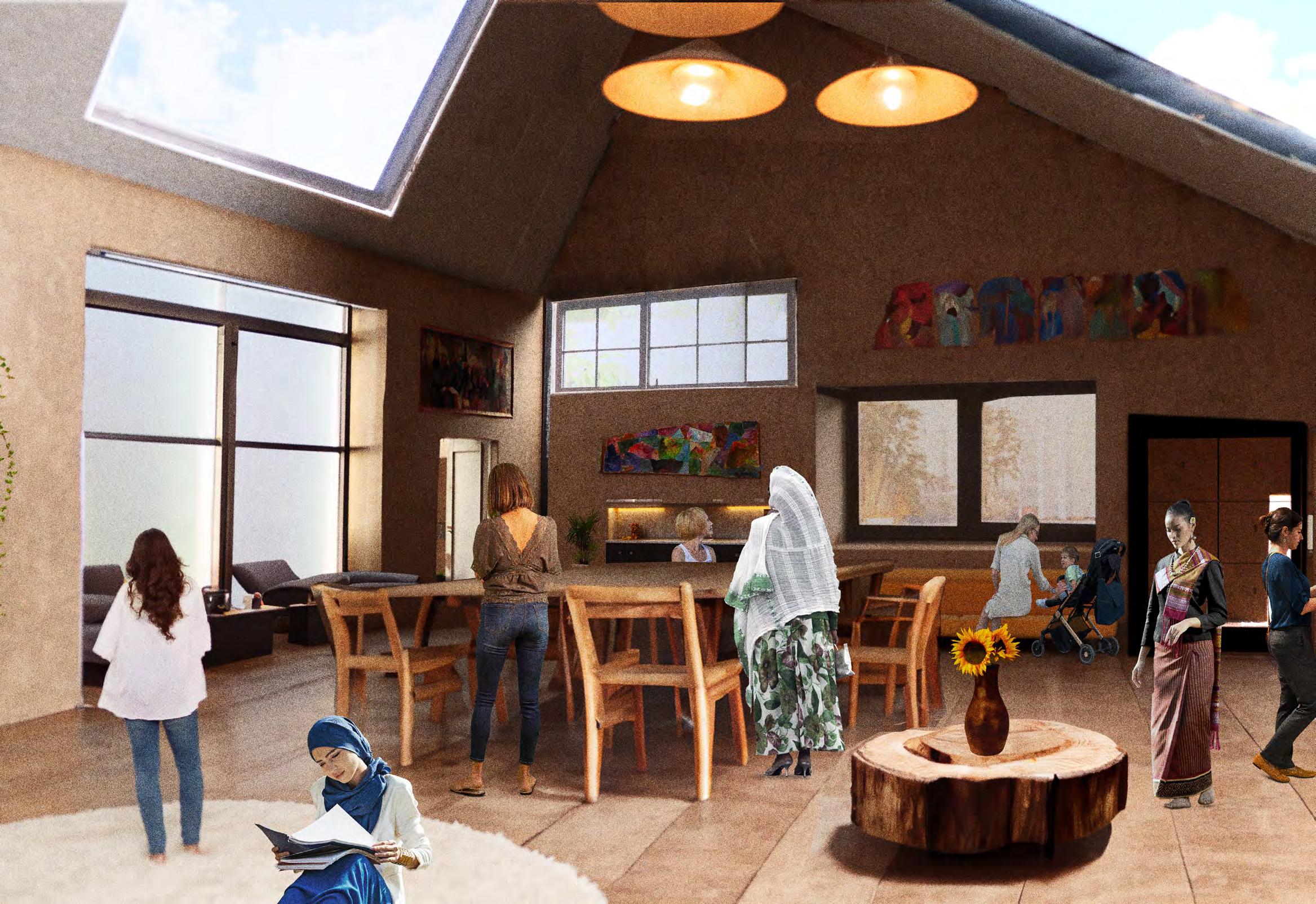
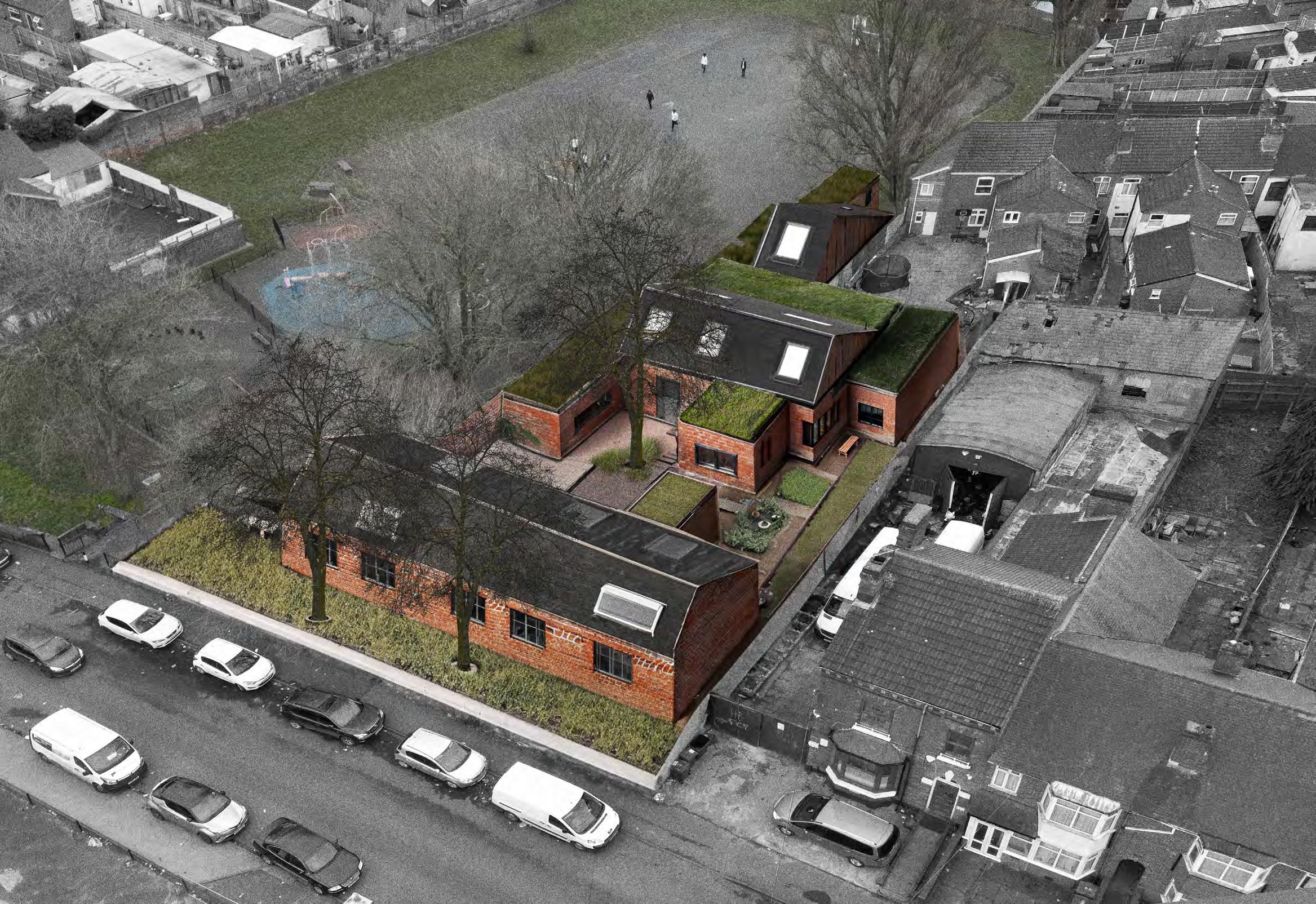

![Trailblazer [Re] Making a Community](https://assets.isu.pub/document-structure/230612193259-2db978a67460d77b54095f52a82cd8a7/v1/7ee4afd10a552cd0dab3cbd9acb5da49.jpeg)

